Dreaming of long, lustrous locks? Look no further! In this comprehensive guide, we delve into the world of DIY hair mask recipes for hair growth. Discover 14 nourishing and natural recipes that will revitalize your hair and leave you with a stunning mane that’s the envy of all. Whether you’re dealing with hair loss, or breakage, or simply aiming to enhance your hair’s overall health, these homemade hair masks have got you covered. Say goodbye to dull and lackluster locks and say hello to a journey toward vibrant and flourishing hair. Let’s dive into the magic of these DIY hair masks and unlock the secrets to achieving the beautiful hair you’ve always desired.
Understanding Hair Growth:
To embark on our journey to longer hair, let’s first understand the hair growth cycle. Our hair goes through three phases: the anagen (growth) phase, the catagen (transitional) phase, and the telogen (resting) phase. A healthy hair growth cycle relies on factors like genetics, nutrition, hormonal balance, and scalp health. By focusing on these aspects, you can support your hair’s natural growth potential.
Benefits of DIY Hair Masks
When it comes to truly healthy hair, nothing beats the power of nature. DIY hair masks offer a safe, affordable, and chemical-free way to revive your strands from root to tip. Each mask can be tailored to your unique hair type, lifestyle, and concerns — giving your hair the kind of nourishment that store-bought products rarely deliver. Here’s why they’re worth the love:
1. 💆♀️ Custom Care for Your Unique Hair
No two heads of hair are the same — and neither should your treatments be! DIY hair masks let you mix ingredients that suit your exact needs. Whether you’re battling dryness, frizz, dandruff, or thinning hair, you can pick natural ingredients that directly target the issue.
Example: Coconut oil for deep moisture, aloe vera for soothing scalp care, or fenugreek for stronger roots.
2. 🚫 Free from Harsh Chemicals
Commercial products often contain sulfates, parabens, silicones, and artificial fragrances that can strip natural oils and cause buildup. Homemade masks are made with pure, edible-grade ingredients — safe for both hair and scalp. You control what goes in, ensuring your routine stays clean, gentle, and toxin-free.
3. 🥑 Packed with Nutrients & Vitamins
DIY ingredients like avocado, banana, yogurt, and olive oil are rich in vitamins A, E, C, and B-complex, along with minerals and fatty acids that strengthen the hair shaft. These nutrients help repair split ends, reduce breakage, and make your hair look naturally glossy and resilient.
4. 💧 Deep Hydration & Moisture Retention
Dry, brittle hair is one of the most common signs of damage. Natural moisturizers such as honey, aloe vera, coconut milk, and shea butter penetrate deeply into the hair cuticle, replenishing lost moisture. Regular use keeps your hair soft, smooth, and tangle-free.
5. 🌸 Improved Scalp Health & Blood Circulation
A healthy scalp equals healthy hair growth. Most DIY masks require gentle scalp massage — which increases blood flow, delivers more oxygen to follicles, and helps essential nutrients reach the roots. Ingredients like castor oil, rosemary, and onion juice are especially known to stimulate hair follicles and promote thicker growth.
6. 🌎 Eco-Friendly & Budget-Friendly
Why spend a fortune on fancy products when the best ingredients are already in your kitchen? DIY masks are cost-effective, reduce plastic waste, and use sustainable resources. They’re an easy way to pamper yourself while caring for the planet.
7. 🧘♀️ A Relaxing Self-Care Ritual
Beyond results, DIY hair masking is an act of mindfulness. The process of mixing natural ingredients, applying them gently, and waiting while they work their magic is calming and rejuvenating. It’s a mini spa ritual that relieves stress, improves mood, and connects you to nature’s rhythm.
8. 🌼 Long-Term Results, Naturally
Unlike quick-fix products that offer temporary shine, DIY masks strengthen your hair from within. Consistent use can gradually reduce hair fall, improve texture, and restore natural shine — creating hair that’s not just beautiful on the outside but healthy from the inside.
✨ In short: DIY hair masks are pure nourishment — a blend of simplicity, science, and self-care. They hydrate, heal, and protect your strands without costing the earth or harming your health. With regular use, you’ll notice softer texture, stronger roots, and a natural, healthy shine that no salon can replicate.
DIY Hair Mask Recipes:
Recipe 1: Avocado and Banana Mask

Avocado is rich in vitamins that promote hair growth and prevent hair loss. When combined with banana, which is known for its hair-strengthening properties, and coconut oil, which provides deep hydration, you have a mask that’s a treat for your hair.
Ingredients:
- 1 ripe avocado
- 1 ripe banana
- 2 tablespoons of coconut oil
Instructions:
- Blend the avocado and banana until smooth.
- Add coconut oil and mix well.
- Apply the mask generously, focusing on your scalp and hair.
- Leave it on for around 20 minutes.
- Wash off with lukewarm water.
Benefits:
The Avocado and Banana Hair Mask deeply nourishes and moisturizes hair, leaving it soft and manageable. Avocado’s natural oils repair damage, while banana’s vitamins promote hair health. This mask strengthens, reduces frizz, and enhances overall hair texture.
Recipe 2: Aloe Vera and Castor Oil Mask

Aloe vera soothes the scalp and helps maintain a healthy pH balance, while castor oil is known to stimulate hair follicles for increased growth. The addition of essential oil enhances circulation and invigorates hair growth.
Ingredients:
- 1/4 cup of aloe vera gel
- 2 tablespoons of castor oil
- A few drops of your favorite essential oil (e.g., lavender, rosemary)
Instructions:
- Mix aloe vera gel and castor oil until well combined.
- Add a few drops of the essential oil and mix again.
- Gently massage the mixture into your scalp.
- Cover your hair with a shower cap and leave it on overnight.
- In the morning, wash your hair with a mild shampoo.
Benefits:
The Aloe Vera and Castor Oil Hair Mask promotes hair growth by nourishing the scalp and strengthening follicles. Aloe vera’s soothing properties combined with castor oil’s richness create a potent blend that reduces hair loss and enhances thickness. This mask revitalizes hair and adds a natural shine.
Recipe 3: Yogurt and Fenugreek Seed Mask
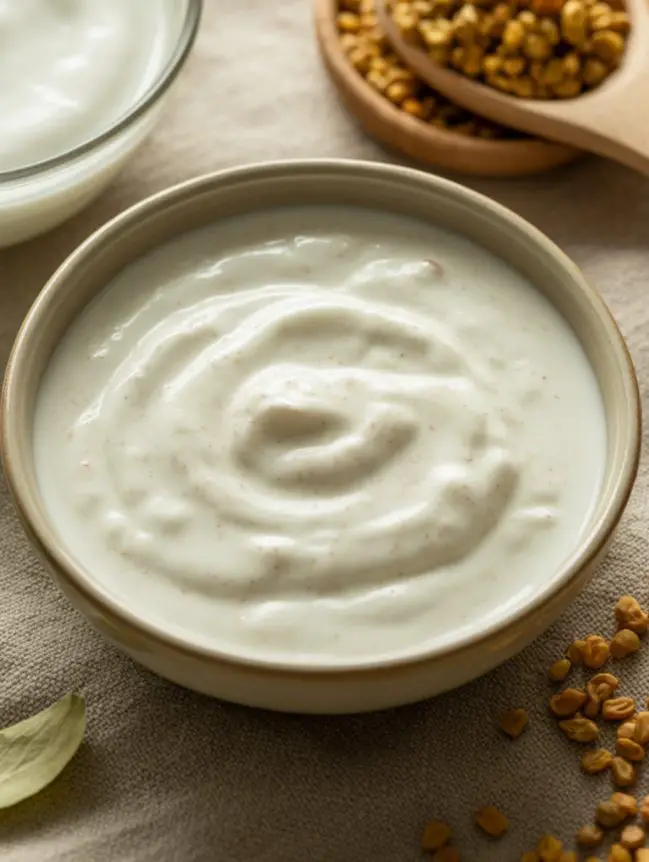
Ingredients:
- 1/2 cup of yogurt (plain, unsweetened)
- 2 tablespoons of fenugreek seeds
Instructions:
- Soak the fenugreek seeds in water overnight.
- Grind the soaked seeds to form a smooth paste.
- Mix the fenugreek paste with yogurt until well blended.
- Apply the mask from roots to tips, massaging it into your scalp.
- Leave it on for about 30 minutes.
- Rinse off with lukewarm water and a gentle shampoo.
Benefits:
Yogurt is rich in protein and probiotics that nourish the hair follicles and promote a healthy scalp. Fenugreek seeds are known for their ability to strengthen hair, prevent breakage, and stimulate growth.
Recipe 4: Green Tea and Lemon Juice Mask

Ingredients:
- 1 cup of freshly brewed green tea (cooled)
- Juice of half a lemon
Instructions:
- Mix the green tea and lemon juice in a bowl.
- After shampooing, pour the mixture onto your hair, ensuring even coverage.
- Gently massage your scalp for a few minutes.
- Let the mask sit for 10-15 minutes.
- Rinse thoroughly with water.
Benefits:
Green tea is packed with antioxidants that help to promote hair growth and reduce hair loss. Lemon juice helps to balance the scalp’s pH, control excess oil, and add shine to your hair.
Recipe 5: Banana and Honey Hair Mask

Ingredients:
- 2 ripe bananas
- 2 tablespoons of honey
- 1 tablespoon of olive oil
Instructions:
- Mash the ripe bananas until smooth.
- Add honey and olive oil, and mix well.
- Apply the mixture evenly from roots to ends.
- Cover your hair with a shower cap and leave it on for 30 minutes.
- Rinse off with lukewarm water and a mild shampoo.
Benefits:
Bananas are rich in vitamins, potassium, and natural oils that moisturize and strengthen hair. Honey locks in moisture, making your hair softer and more manageable, while olive oil adds a boost of nourishment.
Recipe 6: Rice Water and Rosemary Mask

Ingredients:
- 1/2 cup of rice water (water obtained from rinsing rice)
- 5-6 drops of rosemary essential oil
Instructions:
- After washing the rice, collect the water used for rinsing.
- Mix in a few drops of rosemary essential oil.
- Apply the rice water mixture to your hair, focusing on the scalp.
- Gently massage for a few minutes.
- Leave it on for 15-20 minutes.
- Rinse with water.
Benefits:
Rice water contains vitamins and minerals that promote hair growth, improve elasticity, and add shine. Rosemary essential oil stimulates blood circulation, helping to strengthen hair follicles.
Recipe 7: Pumpkin and Coconut Milk Mask

Ingredients:
- 1/2 cup of pumpkin puree
- 1/4 cup of coconut milk
- 1 tablespoon of honey
Instructions:
- Mix pumpkin puree, coconut milk, and honey until well combined.
- Apply the mask to your hair, starting from the roots and working your way down.
- Leave the mask on for 20-30 minutes.
- Rinse off with lukewarm water and a gentle shampoo.
Benefits:
Pumpkin is rich in vitamins A and C, which support hair health and growth. Coconut milk provides hydration and adds a natural shine to your hair. Honey helps to retain moisture and promotes a healthy scalp.
Recipe 8: Hibiscus and Coconut Oil Mask
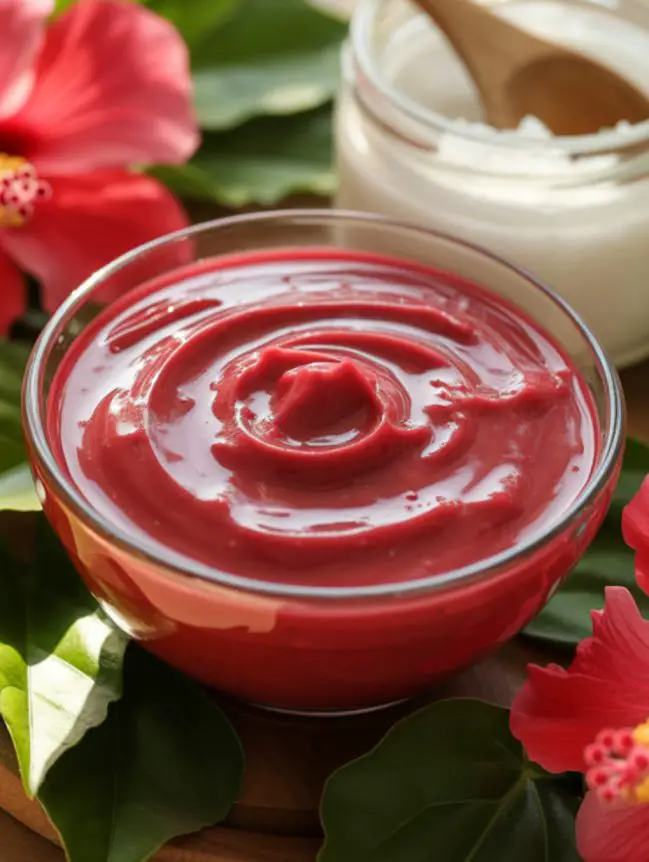
Ingredients:
- A handful of hibiscus petals (fresh or dried)
- 2 tablespoons of coconut oil
Instructions:
- Crush the hibiscus petals to create a paste.
- Mix the hibiscus paste with coconut oil until well combined.
- Apply the mask to your hair, focusing on the scalp and strands.
- Leave it on for 30 minutes.
- Rinse off with lukewarm water.
Benefits:
Hibiscus contains vitamins and antioxidants that stimulate hair growth and improve hair texture. Coconut oil adds moisture and nourishment, leaving your hair silky and vibrant.
Recipe 9: Oatmeal and Almond Milk Mask

Ingredients:
- 1/2 cup of cooked oatmeal
- 1/4 cup of almond milk
Instructions:
- Cook oatmeal according to package instructions and let it cool.
- Mix the cooled oatmeal with almond milk to form a paste.
- Apply the mask to your hair, massaging it into the scalp.
- Leave it on for 20-30 minutes.
- Rinse off with water.
Benefits:
Oatmeal soothes the scalp and provides gentle exfoliation, while almond milk adds hydration and shine to your hair.
Recipe 10: Moringa and Argan Oil Mask
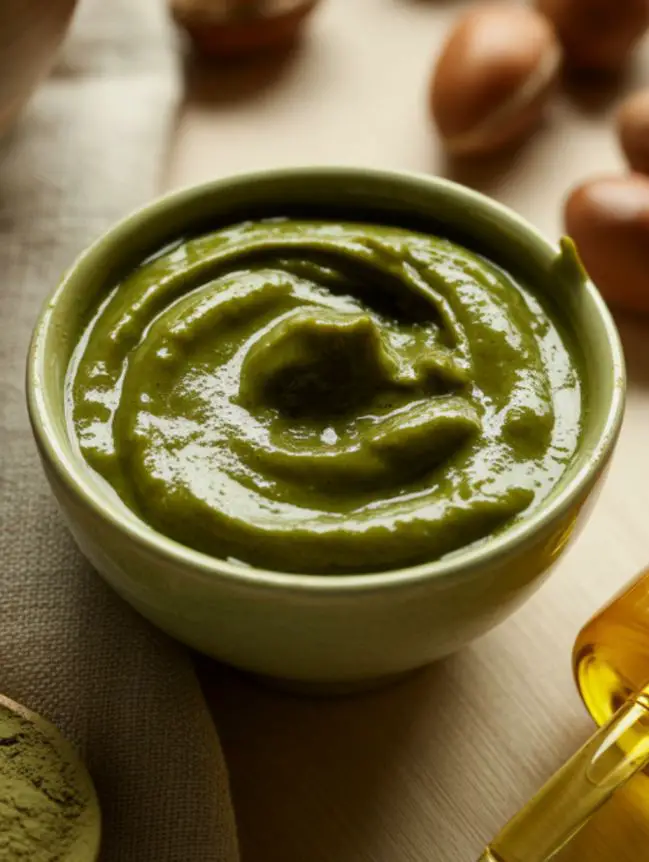
Ingredients:
- 2 tablespoons of moringa powder
- 1 tablespoon of argan oil
Instructions:
- Mix moringa powder and argan oil until well blended.
- Apply the mixture to your hair, focusing on the roots and ends.
- Wrap your hair in a warm towel or use a shower cap.
- Leave it on for 30 minutes.
- Rinse off with lukewarm water.
Benefits:
Moringa is rich in vitamins and minerals that promote hair growth and strengthen hair strands. Argan oil provides deep conditioning and helps to tame frizz.
Also Read-
- Unveiling the Power of Aloe Vera in Your Hair Care Routine
- 6 DIY Natural Shampoos for Oily Hair: A Grease-Free Solution
Recipe 11: Papaya and Yogurt Mask

Ingredients:
- 1/2 cup of ripe papaya (peeled and mashed)
- 1/4 cup of yogurt
Instructions:
- Mash the ripe papaya until smooth.
- Mix the papaya mash with yogurt until well combined.
- Apply the mask to your hair, focusing on the scalp and tips.
- Leave it on for 20-30 minutes.
- Rinse off with lukewarm water.
Benefits:
Papaya contains enzymes that help to remove dead skin cells from the scalp, promoting a healthy environment for hair growth. Yogurt adds nourishment and shine to your hair.
Recipe 12: Avocado and Aloe Vera Mask

Ingredients:
- 1 ripe avocado
- 2 tablespoons of aloe vera gel
Instructions:
- Mash the ripe avocado until creamy.
- Mix in the aloe vera gel to form a consistent mixture.
- Apply the mask to your hair, focusing on the lengths and ends.
- Leave it on for 20-30 minutes.
- Rinse off with lukewarm water.
Benefits:
Avocado is rich in healthy fats and vitamins that nourish and strengthen hair. Aloe vera soothes the scalp and adds hydration, promoting healthy hair growth.
Recipe 13: Honey and Cinnamon Mask

Ingredients:
- 2 tablespoons of honey
- 1 teaspoon of cinnamon powder
Instructions:
- Mix honey and cinnamon powder until well combined.
- Apply the mixture to your hair, gently massaging it into the scalp.
- Leave it on for 30 minutes.
- Rinse off with lukewarm water.
Benefits:
Honey is a natural humectant that locks in moisture and promotes a healthy scalp. Cinnamon stimulates blood circulation, aiding in hair growth and overall hair health.
Recipe 14: Cucumber and Aloe Vera Mask

Ingredients:
- 1/2 cucumber (peeled and blended)
- 2 tablespoons of aloe vera gel
Instructions:
- Blend the cucumber to create a smooth puree.
- Mix in the aloe vera gel to form a consistent mixture.
- Apply the mask to your hair, focusing on the scalp and lengths.
- Leave it on for 20-30 minutes.
- Rinse off with lukewarm water.
Benefits:
Cucumber is refreshing and hydrating, helping to soothe the scalp and promote healthy hair growth. Aloe vera adds moisture and nourishment to your locks.
Recipe 15: Coconut Milk and Honey Strength Mask

Ingredients:
- 1/2 cup of coconut milk (fresh or canned)
- 2 tablespoons of raw honey
- 1 tablespoon of olive oil
Instructions:
- Mix all ingredients in a bowl until smooth.
- Apply the mixture to your scalp and hair lengths.
- Massage gently and cover with a shower cap.
- Leave on for 30 minutes, then rinse with lukewarm water.
Benefits:
This creamy mask deeply conditions and strengthens brittle strands. Coconut milk is rich in lauric acid and protein, helping reduce breakage and split ends, while honey locks in moisture and olive oil adds shine.
Recipe 16: Matcha Green Tea and Yogurt Detox Mask
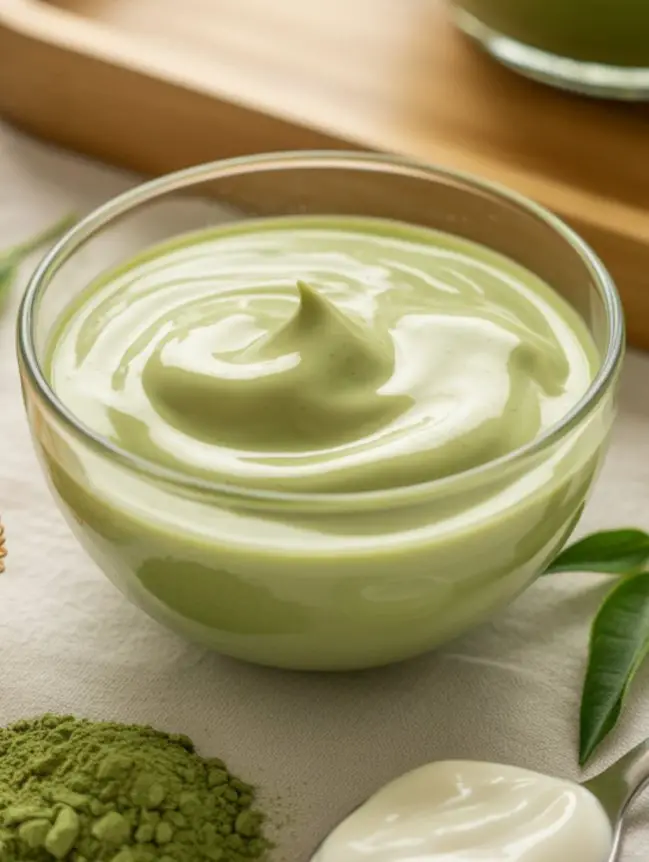
Ingredients:
- 1 tablespoon of matcha green tea powder
- 1/2 cup of plain yogurt
- 1 tablespoon of jojoba oil
Instructions:
- Mix all ingredients until you get a smooth, creamy texture.
- Apply evenly from scalp to ends.
- Leave it for 20 minutes and rinse thoroughly.
Benefits:
Matcha is packed with antioxidants that neutralize free radicals, preventing scalp buildup. Combined with yogurt’s probiotics, this mask purifies the scalp and adds instant bounce.
Recipe 17: Onion Juice and Castor Oil Growth Mask

Ingredients:
- 2 tablespoons of onion juice
- 1 tablespoon of castor oil
- 1 tablespoon of aloe vera gel
Instructions:
- Mix onion juice, castor oil, and aloe vera into a uniform blend.
- Apply to your scalp using a cotton pad or brush.
- Leave on for 30 minutes, then rinse with a mild shampoo.
Benefits:
Onion juice boosts collagen production and improves blood circulation to the scalp. Combined with castor oil’s thickness and aloe vera’s soothing effect, this mask promotes faster and denser hair growth.
Recipe 18: Shea Butter and Argan Oil Repair Mask

Ingredients:
- 2 tablespoons of shea butter (melted)
- 1 tablespoon of argan oil
- 1 tablespoon of coconut oil
Instructions:
- Melt shea butter until smooth and add oils.
- Mix well and apply to dry hair, coating ends generously.
- Leave for 40 minutes before rinsing.
Benefits:
Perfect for dry, color-treated, or curly hair — this ultra-hydrating blend softens frizz, restores elasticity, and prevents breakage, leaving hair silky and defined.
Recipe 19: Aloe Vera and Hibiscus Flower Rejuvenation Mask
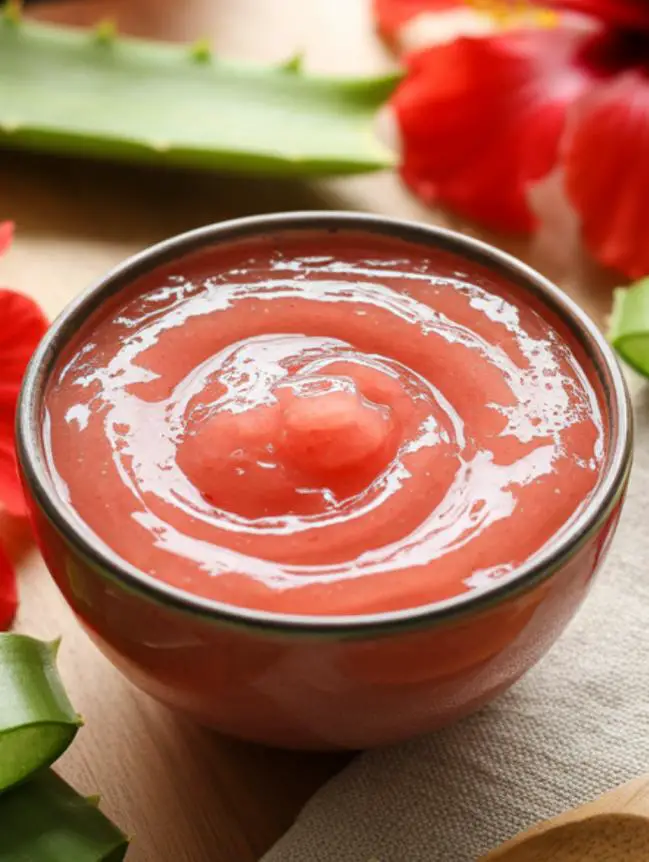
Ingredients:
- 3 hibiscus flowers (fresh)
- 2 tablespoons of aloe vera gel
- 1 tablespoon of coconut oil
Instructions:
- Grind hibiscus flowers into a smooth paste.
- Mix with aloe vera gel and coconut oil.
- Apply from roots to ends and leave for 30 minutes before washing off.
Benefits:
Hibiscus stimulates dormant follicles, while aloe vera cools and nourishes the scalp. This mask helps control dandruff and adds a natural reddish shine to dark hair.
Recipe 20: Coffee and Coconut Oil Shine Boost Mask

Ingredients:
- 1 tablespoon of finely ground coffee
- 2 tablespoons of coconut oil
- 1 teaspoon of honey
Instructions:
- Mix all ingredients until well-blended.
- Apply on scalp and lengths, gently massaging in circular motion.
- Leave for 20 minutes and rinse thoroughly.
Benefits:
Coffee stimulates blood circulation, promoting faster growth, while coconut oil nourishes and honey adds a glossy, salon-like shine.
Recipe 21: Neem and Tulsi Anti-Dandruff Mask
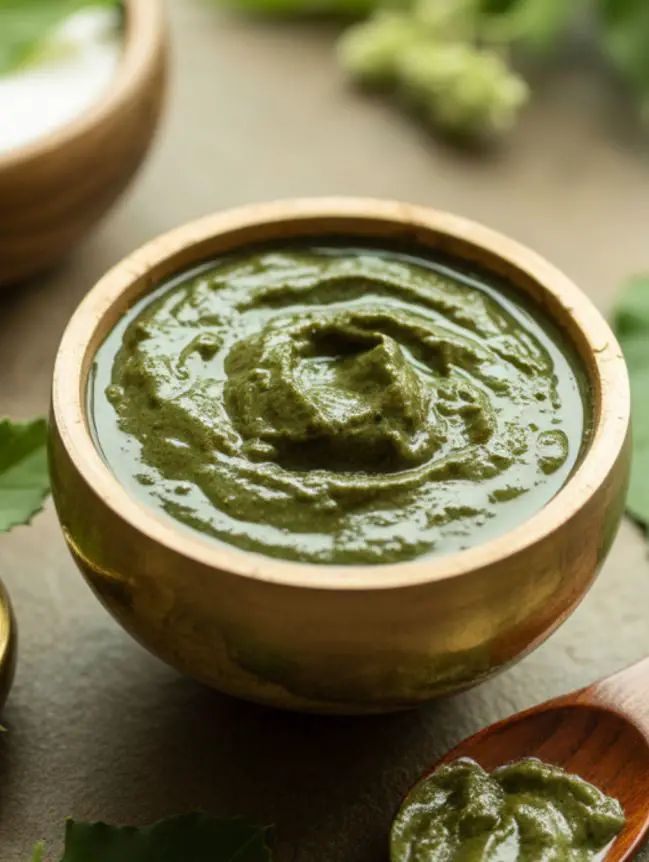
Ingredients:
- 10 neem leaves
- 10 tulsi (holy basil) leaves
- 2 tablespoons of yogurt
Instructions:
- Grind neem and tulsi leaves into a paste.
- Mix with yogurt to create a smooth texture.
- Apply mainly to scalp and leave for 25 minutes.
- Rinse off with mild shampoo.
Benefits:
Neem and tulsi are powerful Ayurvedic herbs that fight dandruff and scalp infections naturally. Yogurt adds moisture, leaving the scalp fresh and balanced.
Recipe 22: Orange Peel and Yogurt Clarifying Mask

Ingredients:
- 2 tablespoons of dried orange peel powder
- 3 tablespoons of yogurt
- 1 teaspoon of honey
Instructions:
- Combine all ingredients to form a thick paste.
- Apply evenly on scalp and hair.
- Let it sit for 20 minutes, then rinse with lukewarm water.
Benefits:
Orange peel exfoliates dead cells, balances scalp oils, and adds a citrusy shine. Yogurt and honey keep your strands smooth and moisturized.
Recipe 23: Lavender Essential Oil and Oat Milk Calming Mask

Ingredients:
- 1/2 cup of oat milk
- 1 tablespoon of aloe vera gel
- 4–5 drops of lavender essential oil
Instructions:
- Mix all ingredients in a bowl.
- Apply evenly, focusing on the scalp and roots.
- Leave on for 20 minutes before rinsing off with cold water.
Benefits:
This gentle, calming mask is perfect for irritated or sensitive scalps. Lavender relaxes and balances sebum, while oat milk soothes dryness and adds softness.
Recipe 24: Rose Water and Almond Oil Softening Mask
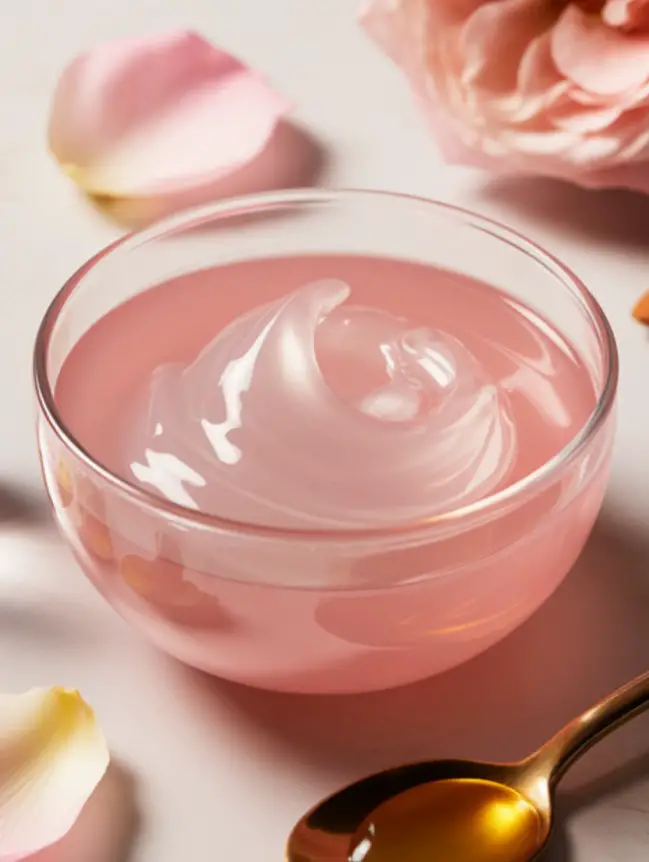
Ingredients:
- 1/4 cup rose water
- 2 tablespoons almond oil
- 1 tablespoon glycerin
Instructions:
Mix and apply from roots to ends. Leave for 15–20 minutes, then rinse.
Benefits:
Restores natural moisture balance, adds fragrance, and leaves hair feeling soft and smooth.
Recipe 25: Aloe Vera & Coconut Water Hydration Mask

Ingredients:
- 1/2 cup fresh aloe vera gel
- 1/4 cup coconut water
- 1 tablespoon honey
Instructions:
- Blend aloe vera gel with coconut water and honey.
- Apply to damp hair, focusing on ends.
- Leave for 20 minutes, then rinse with lukewarm water.
Benefits:
Aloe vera soothes and repairs the scalp, while coconut water replenishes hydration and adds natural sheen. Perfect for summer or post-swim hair care.
Recipe 26: Flaxseed & Castor Oil Curl-Defining Mask

Ingredients:
- 2 tablespoons flaxseeds
- 1 cup water
- 1 tablespoon castor oil
Instructions:
- Boil flaxseeds in water until it forms a gel.
- Strain and mix with castor oil.
- Apply to damp hair and leave for 30 minutes.
- Rinse off gently with cool water.
Benefits:
Flaxseed gel enhances curl definition, reduces frizz, and promotes scalp health. Castor oil aids growth and provides volume for curly or wavy hair.
Recipe 27: Lemon & Aloe Detox Mask
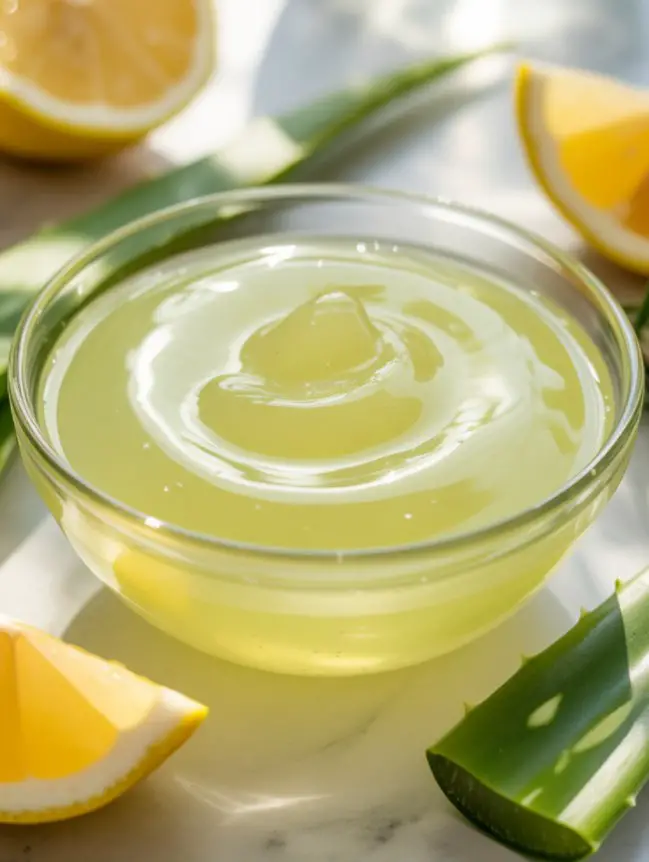
Ingredients:
- Juice of 1 lemon
- 2 tablespoons aloe vera gel
- 1 tablespoon coconut oil
Instructions:
- Mix lemon juice and aloe gel.
- Add coconut oil and stir well.
- Massage onto scalp and leave for 15 minutes only.
- Rinse thoroughly with mild shampoo.
Benefits:
Cleanses excess oil, balances scalp pH, and fights dandruff. Aloe offsets lemon’s acidity, keeping the scalp nourished and fresh.
Recipe 28: Bhringraj & Amla Ayurvedic Hair Growth Mask
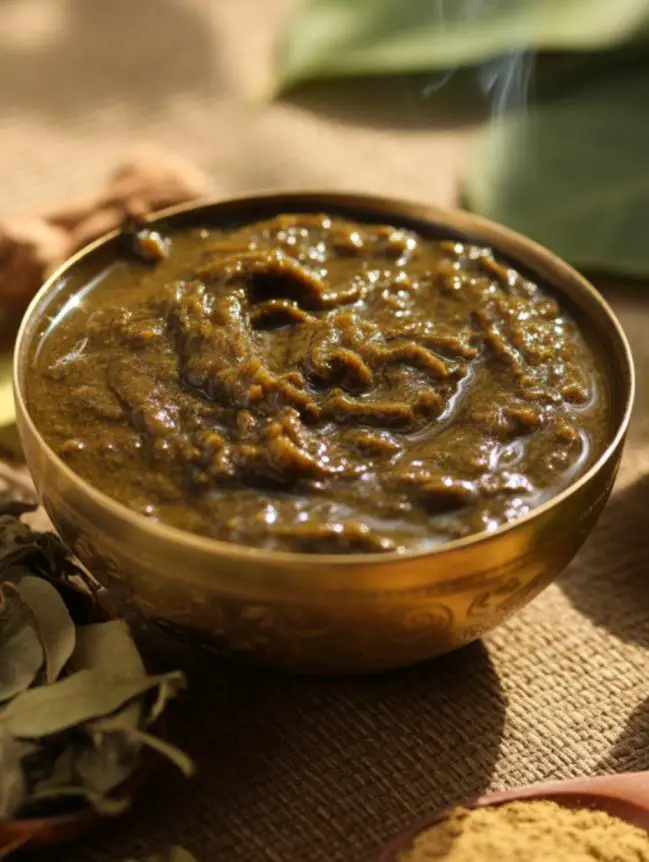
Ingredients:
- 2 tablespoons bhringraj powder
- 2 tablespoons amla powder
- 1/2 cup yogurt
Instructions:
- Mix powders with yogurt to form a thick paste.
- Apply evenly on scalp and hair.
- Leave for 30–40 minutes before rinsing.
Benefits:
A timeless Ayurvedic combo — bhringraj stimulates dormant follicles while amla strengthens roots and enhances shine. Encourages thick, lustrous hair over time.
Recipe 29: Aloe Vera, Cucumber & Mint Cooling Mask

Ingredients:
- 1/2 cucumber (blended)
- 2 tablespoons aloe vera gel
- A few mint leaves (crushed)
Instructions:
- Blend all ingredients into a smooth paste.
- Apply to scalp and lengths.
- Leave for 20 minutes before rinsing.
Benefits:
Soothes itchy, irritated scalp and gives a cooling effect during summer. Aloe and mint refresh the scalp while cucumber hydrates deeply.
Recipe 30: Almond & Oat Protein Mask

Ingredients:
- 1/4 cup almond milk
- 2 tablespoons oat flour
- 1 tablespoon coconut oil
Instructions:
- Mix all ingredients to form a paste.
- Apply evenly to clean, damp hair.
- Leave for 25 minutes, then rinse.
Benefits:
Almond milk is rich in vitamin E for smoothness, while oats repair damaged cuticles. Adds softness and elasticity to dull, dry hair.
Recipe 31: Pumpkin Seed Oil & Yogurt Revitalizing Mask
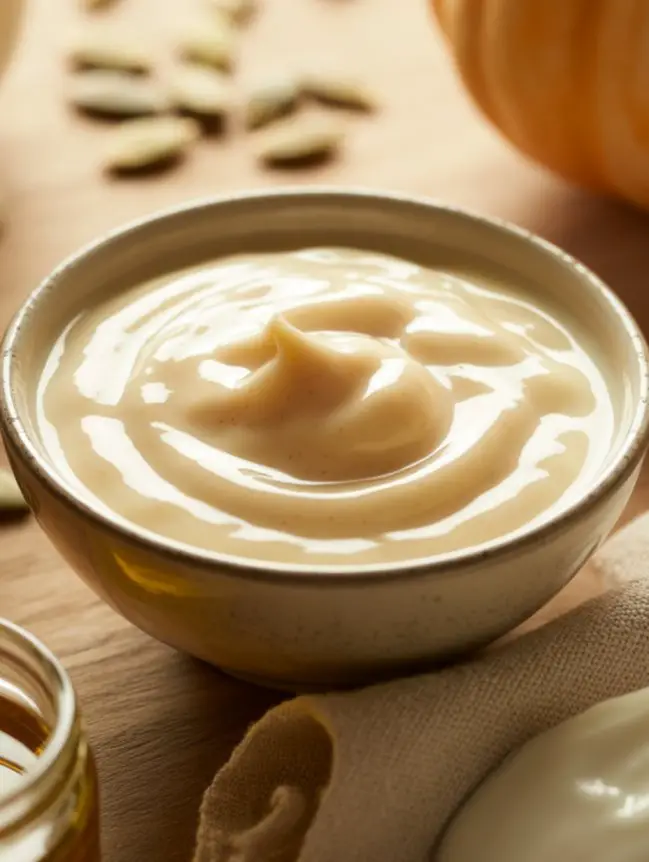
Ingredients:
- 2 tablespoons pumpkin seed oil
- 1/4 cup yogurt
- 1 teaspoon honey
Instructions:
- Combine all ingredients into a creamy mixture.
- Apply from roots to ends.
- Leave for 30 minutes before rinsing.
Benefits:
Pumpkin seed oil is high in zinc and fatty acids that strengthen hair and boost volume. Yogurt and honey nourish, adding smooth texture.
Recipe 32: Blueberry & Olive Oil Antioxidant Mask
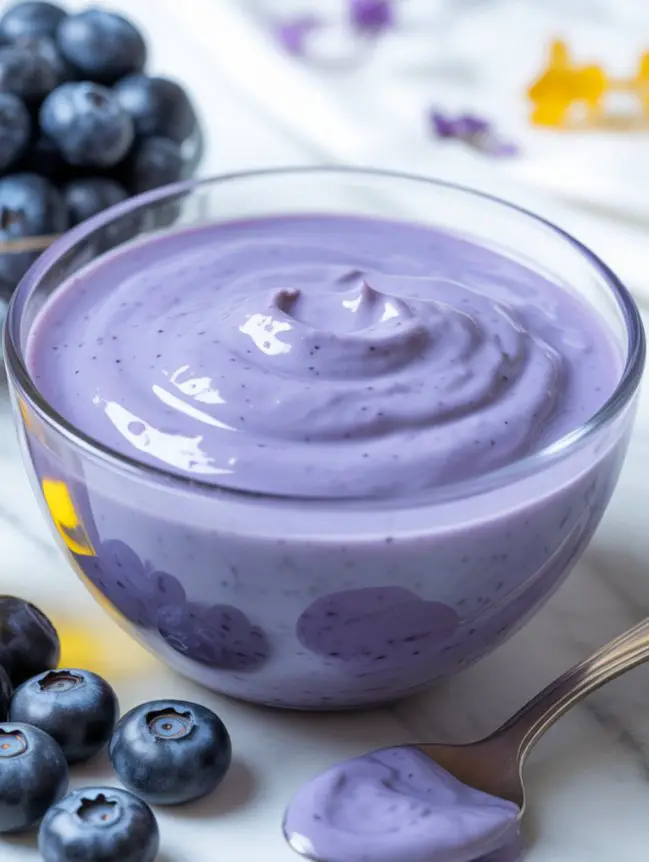
Ingredients:
- 1/4 cup mashed blueberries
- 1 tablespoon olive oil
- 1 tablespoon yogurt
Instructions:
- Mash blueberries and mix with olive oil and yogurt.
- Apply the mixture evenly across scalp and strands.
- Leave for 20–25 minutes, then rinse off.
Benefits:
Blueberries are rich in vitamin C and antioxidants that protect against environmental damage. Olive oil smooths and seals in moisture, leaving hair radiant.
Recipe 33: Rose Petal & Coconut Cream Gloss Mask

Ingredients:
- 1/4 cup crushed rose petals (fresh or dried)
- 2 tablespoons coconut cream
- 1 teaspoon rose water
Instructions:
- Blend rose petals into a paste.
- Mix in coconut cream and rose water.
- Apply to hair, focusing on ends.
- Leave for 25 minutes before rinsing.
Benefits:
This luxurious floral mask softens hair, adds gloss, and enhances natural fragrance. Rose petals soothe scalp irritation and coconut cream provides silky texture.
Recipe 34: Fenugreek & Aloe Deep Strengthening Mask

Ingredients:
- 2 tablespoons fenugreek seeds (soaked overnight)
- 2 tablespoons aloe vera gel
- 1 tablespoon coconut oil
Instructions:
- Blend soaked seeds into a paste.
- Mix with aloe and coconut oil.
- Apply thoroughly to scalp and leave for 30 minutes.
- Rinse with cool water.
Benefits:
A potent growth mask — fenugreek strengthens roots and reduces shedding, while aloe soothes and coconut oil deeply conditions.
Tips for Application and Removal
Applying and removing DIY hair masks correctly is essential to maximize their effectiveness and avoid any mishaps. Here are some expert tips to ensure you get the most out of your hair mask experience:
- Preparation is Key: Before applying any hair mask, make sure your hair is clean and free from styling products. This allows the mask’s ingredients to penetrate the hair shaft effectively.
- Part Your Hair: Divide your hair into sections using clips. This ensures even application and thorough coverage, especially if you have thick or long hair.
- Test for Allergies: If you’re using a new ingredient, like essential oils, perform a patch test on your skin to check for any allergic reactions before applying the mask to your hair.
- Damp Hair: Apply the mask to slightly damp hair. This helps the mask spread more easily and ensures better absorption of nutrients.
- Massage the Scalp: While applying the mask, gently massage your scalp in circular motions. This promotes blood circulation and helps the mask reach the hair follicles.
- Use a Comb: Use a wide-tooth comb to distribute the mask evenly through your hair. This prevents clumps and ensures that all strands are coated.
- Avoid the Roots: When applying the mask, avoid the roots if you have an oily scalp. Concentrate on the lengths and ends to prevent excessive oiliness.
- Warm Towel Wrap: For deep penetration, wrap your hair in a warm towel or cover it with a shower cap after applying the mask. The warmth opens up the hair cuticles, allowing the mask to work its magic.
- Relaxation Time: Give the mask ample time to work. Follow the recommended time mentioned in the recipe or on the product label.
- Rinse Thoroughly: When rinsing out the mask, use lukewarm water. Avoid using hot water, as it can strip your hair of natural oils.
- Conditioner After: After rinsing out the mask, you can use a mild conditioner to seal the hair cuticles and provide an extra layer of hydration.
- Cold Water Rinse: Finish with a cold water rinse to help close the hair cuticles and add shine.
- Avoid Overdoing: While using hair masks is beneficial, overdoing it can lead to product buildup and weighed-down hair. Use masks as recommended – usually once or twice a week.
- Patience is Key: Results may not be instant. Consistent use of hair masks over a period of time will yield better results.
- Choose the Right Ingredients: Tailor your hair mask to your specific needs. If your hair is dry, choose masks with moisturizing ingredients, and if you’re dealing with hair loss, focus on masks that stimulate the scalp.
- Be Gentle: When applying and rinsing off the mask, handle your hair gently to avoid breakage.
- Customize for Hair Type: If you have curly hair, focus on hydrating masks. If you have oily hair, go for masks with clarifying ingredients.
- Protect Clothing: Hair masks can be messy. Wear an old shirt and use a towel around your shoulders to protect your clothes.
With these tips in mind, you’ll be able to apply and remove your DIY hair masks with confidence, ensuring that your hair receives the maximum benefits from each treatment.
Frequency and Results:
Consistency is key. Aim to use these masks 1-2 times a week for optimal results. Keep in mind that hair growth results are gradual and may take several weeks to months before you notice a significant difference. Be patient and persistent in your hair care routine.
Health Disclaimer of DIY Hair Mask Recipes for Hair Growth:
The information provided in this article is intended for general guidance and informational purposes only. The DIY hair mask recipes mentioned are based on natural ingredients, but individual results may vary. Before trying any new hair treatment, it’s advisable to conduct a patch test and consult a healthcare professional, especially if you have allergies, sensitivities, or pre-existing medical conditions. For a comprehensive health disclaimer, please visit our Health Disclaimer page. Always prioritize your safety and well-being.
FAQs (Frequently Asked Questions)
Q1: How often should I use these DIY hair masks?
It’s generally recommended to use these masks once or twice a week. Overuse can lead to product buildup and may not yield better results.
Q2: Can I use these masks if I have color-treated hair?
Yes, but be cautious. Some ingredients may affect your hair color. Test a small section before applying the mask all over.
Q3: Can I leave the hair mask on overnight?
It’s best to follow the recommended time mentioned in the recipe. Leaving masks on for too long can lead to excessive drying.
Q4: Will these masks help with hair loss?
Many masks contain ingredients that promote hair growth and strengthen follicles. Consistent use may help reduce hair loss.
Q5: How do you make a hair mask to make your hair grow longer?
Create a hair mask with ingredients like aloe vera, castor oil, and fenugreek seeds. Mix them into a paste, apply to your hair, and leave it on for 30 minutes before rinsing.
Q6: Which mask is best for hair growth?
Masks with fenugreek seeds, aloe vera, castor oil, and onion juice are known for their ability to stimulate hair growth.
Q7: How often should you do a hair mask for hair growth?
Using a hair mask once or twice a week can provide the best balance between nourishment and preventing product buildup.
Q8: Do hair masks promote hair growth?
Yes, many hair mask ingredients provide essential nutrients to the scalp and hair follicles, promoting a healthy environment for growth.
Q9: What oil is best for hair mask DIY?
Coconut oil, argan oil, and olive oil are popular choices due to their nourishing properties. They moisturize and strengthen hair strands.
Q9: Are these masks safe for sensitive scalps?
Most ingredients are natural and gentle, but always do a patch test first to check for any allergic reactions.
Conclusion:
Unlocking the secret to longer, healthier hair lies in the power of nature’s ingredients. By using DIY hair masks, you’re not only nourishing your hair but also pampering yourself with a luxurious and effective hair care ritual. Embrace the journey towards vibrant, flowing locks and celebrate the beauty of your hair growth adventure.
Final Thoughts:
With these DIY hair mask recipes in your arsenal, you’re well on your way to achieving the hair of your dreams. Remember, every strand of hair you care for brings you one step closer to the hair growth you desire. Share your experiences and results with us, and let’s celebrate the beauty of natural hair care together!
